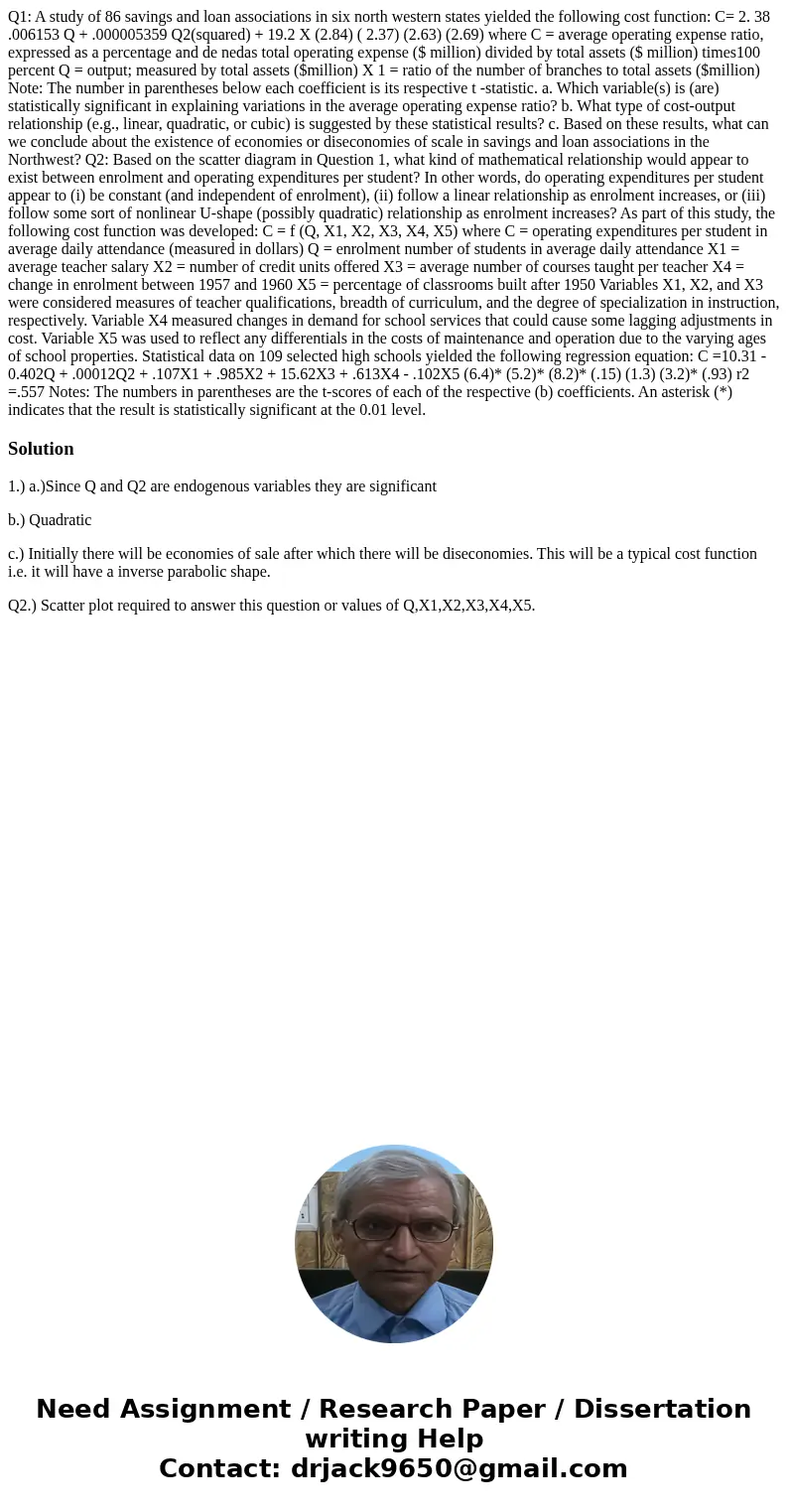Q1 A study of 86 savings and loan associations in six north
Q1: A study of 86 savings and loan associations in six north western states yielded the following cost function: C= 2. 38 .006153 Q + .000005359 Q2(squared) + 19.2 X (2.84) ( 2.37) (2.63) (2.69) where C = average operating expense ratio, expressed as a percentage and de nedas total operating expense ($ million) divided by total assets ($ million) times100 percent Q = output; measured by total assets ($million) X 1 = ratio of the number of branches to total assets ($million) Note: The number in parentheses below each coefficient is its respective t -statistic. a. Which variable(s) is (are) statistically significant in explaining variations in the average operating expense ratio? b. What type of cost-output relationship (e.g., linear, quadratic, or cubic) is suggested by these statistical results? c. Based on these results, what can we conclude about the existence of economies or diseconomies of scale in savings and loan associations in the Northwest? Q2: Based on the scatter diagram in Question 1, what kind of mathematical relationship would appear to exist between enrolment and operating expenditures per student? In other words, do operating expenditures per student appear to (i) be constant (and independent of enrolment), (ii) follow a linear relationship as enrolment increases, or (iii) follow some sort of nonlinear U-shape (possibly quadratic) relationship as enrolment increases? As part of this study, the following cost function was developed: C = f (Q, X1, X2, X3, X4, X5) where C = operating expenditures per student in average daily attendance (measured in dollars) Q = enrolment number of students in average daily attendance X1 = average teacher salary X2 = number of credit units offered X3 = average number of courses taught per teacher X4 = change in enrolment between 1957 and 1960 X5 = percentage of classrooms built after 1950 Variables X1, X2, and X3 were considered measures of teacher qualifications, breadth of curriculum, and the degree of specialization in instruction, respectively. Variable X4 measured changes in demand for school services that could cause some lagging adjustments in cost. Variable X5 was used to reflect any differentials in the costs of maintenance and operation due to the varying ages of school properties. Statistical data on 109 selected high schools yielded the following regression equation: C =10.31 - 0.402Q + .00012Q2 + .107X1 + .985X2 + 15.62X3 + .613X4 - .102X5 (6.4)* (5.2)* (8.2)* (.15) (1.3) (3.2)* (.93) r2 =.557 Notes: The numbers in parentheses are the t-scores of each of the respective (b) coefficients. An asterisk (*) indicates that the result is statistically significant at the 0.01 level.
Solution
1.) a.)Since Q and Q2 are endogenous variables they are significant
b.) Quadratic
c.) Initially there will be economies of sale after which there will be diseconomies. This will be a typical cost function i.e. it will have a inverse parabolic shape.
Q2.) Scatter plot required to answer this question or values of Q,X1,X2,X3,X4,X5.

 Homework Sourse
Homework Sourse